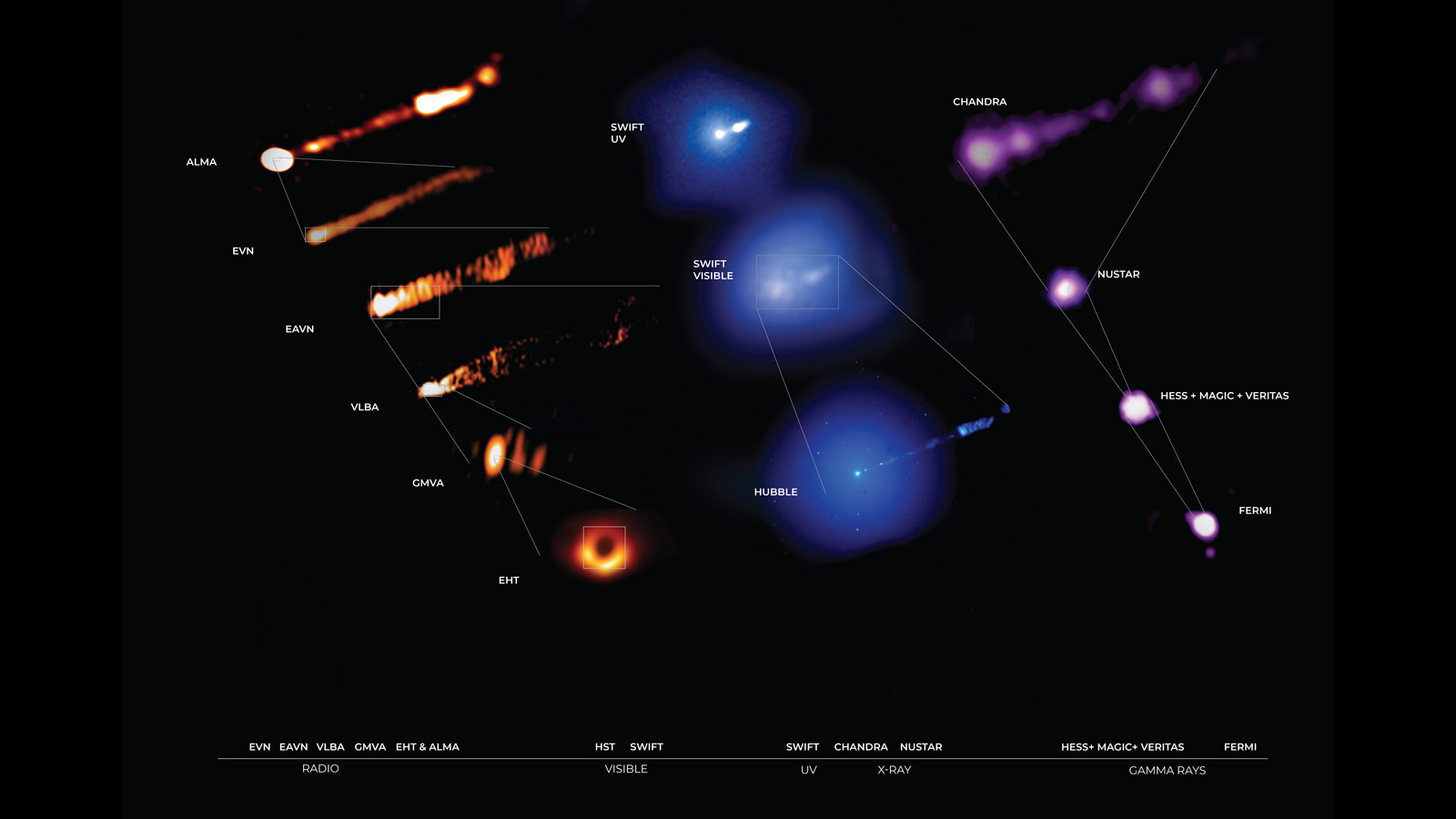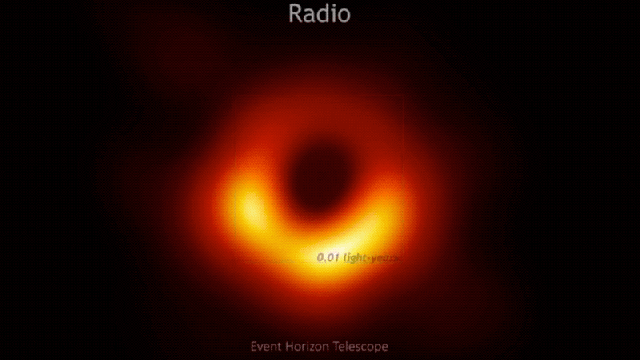Two years ago, astronomers acquired the first direct image of a black hole. A coordinated observation campaign of this object is now adding to our understanding of this black hole and its tumultuous surroundings.
Located at the core of elliptical galaxy M87, this supermassive black hole carries the mass of 6.5 billion Suns. In April 2019, the Event Horizon Telescope (EHT) Collaboration released a direct image of this object, in what was an unparalleled achievement for astronomers.
Our understanding of the M87 black hole has taken a major leap forward owing to an extensive multi-wavelength observational campaign of the object, the details of which now appear in Astrophysical Journal Letters. This colossal campaign took place from April to March 2017, and it involved 760 scientists from nearly 200 institutions around the globe.

“This incredible set of observations includes many of the world’s best telescopes,” Juan Carlos Algaba, an astronomer from the University of Malaya in Kuala Lumpur, Malaysia, said in a NASA JPL press release. “This is a wonderful example of astronomers around the world working together in the pursuit of science.”
A total of 19 different observatories were used during the campaign, including the Hubble Space Telescope, Chandra X-ray Observatory, the Neil Gehrels Swift Observatory, and the Fermi Gamma-ray Space Telescope. Together, these observatories scanned the entire electromagnetic spectrum, offering observations of the M87 black hole in radio waves, visible light, X-rays, and gamma rays.
“We knew that the first direct image of a black hole would be groundbreaking,” explained Kazuhiro Hada, a co-author of the study and an astronomer at the National Astronomical Observatory of Japan, in the NASA release. “But to get the most out of this remarkable image, we need to know everything we can about the black hole’s behaviour at that time by observing over the entire electromagnetic spectrum.”
An accompanying video showcases the power of this multi-wavelength approach. The video starts with the now-iconic image of the M87 black hole, and it slowly zooms back to expose the entire spectacle in context. The scale is shown in light years, and each observatory gets credit for its particular contribution. Side-by-side comparisons are also shown, revealing views of the black hole as imaged in radio waves, visible light, and X-rays. The final portion of the video shows the black hole and its jet in gamma-rays, as viewed by the Fermi telescope.
The high-velocity jet is a striking feature of this and many other supermassive black holes. These jets are the result of tremendous gravitational forces involved, and they move at speeds approaching that of light.
These jets produce varying intensities of light across the entire spectrum, and scientists are keen to study the complex patterns therein, as they are indicative of the black hole’s spin, energy output, and other properties. But this isn’t a simple task, as these variables are constantly changing over time. The new research, through its coordinated campaign, was an attempt to overcome this limitation and capture a multi-wavelength snapshot of the black hole using data captured by all of these observatories at roughly the same time. And indeed, this is now the “largest simultaneous observing campaign ever undertaken on a supermassive black hole with jets,” according to NASA.
The results could improve tests of Einstein’s Theory of General Relativity and provide a better understanding of the jets and their possible association with cosmic rays.
“Understanding the particle acceleration is really central to our understanding of both the EHT image as well as the jets, in all their ‘colours,’” Sera Markoff, a co-author of the study and an astronomer from the University of Amsterdam, said in the press release. “These jets manage to transport energy released by the black hole out to scales larger than the host galaxy, like a huge power cord. Our results will help us calculate the amount of power carried, and the effect the black hole’s jets have on its environment.”
More observations are needed, but the good news is that the EHT started a new observational campaign this week. Excitingly, the new campaign will be even larger, as it now includes the Kitt Peak Telescope in Arizona, the NOrthern Extended Millimetre Array (NOEMA) in France and the Greenland Telescope.
The results of the 2021 observational campaign likely won’t be available for a while, but we can’t wait to see the outcome, including how the M87 black hole has changed during the past four years.
